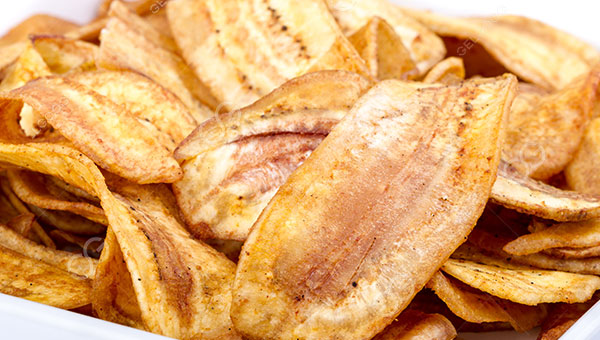Chifles plantain chips are a popular snack food that is loved by consumers. But how are chifles plantain chips made? They are made through a series of processing steps, including peeling, slicing, frying and seasoning. The following is a detailed process of chifles plantain chips production.

- Peeling
The production of plantain chips starts with selecting fresh plantains (green bananas). First, workers cut a slit in the plantain lengthwise and then peel the skin by hand. For small-scale manual production, manual operation can be relied on, but in large-scale production, automated equipment plays an important role, as they can remove the skin more quickly and accurately, saving labor and improving efficiency.
- Slicing
After peeling the plantain, it needs to be cut into thin slices. The slicing methods can be divided into horizontal slicing (circular slicing) and longitudinal slicing (strip slicing). Different slicing methods will affect the appearance and taste of the finished product. In order to ensure the uniformity of the slices, slicing machine are widely used in production lines. Slicing machine can accurately slice plantain into thin slices according to the set thickness, ensuring that each slice of plantain is of the same size, which is convenient for subsequent frying.
- Frying
Frying is a key step in the production of chifles plantain chips. Use an automatic frying machine to fry the sliced plantain until they are golden and crispy. The frying time and temperature need to be adjusted according to the thickness of the chifles plantain chips. Thinner slices usually take a shorter frying time, while thicker ones take longer. During the frying process, plantain chips will absorb a certain amount of oil, so the temperature control and oil temperature management of the frying machine are crucial to ensure that the plantain chips are crispy and not too greasy.
- Seasoning
Fried plantain chips need to be seasoned. Common seasonings include salt, chili powder, cumin powder, powdered sugar, etc. The type of seasoning can be selected according to the consumer’s taste preferences.
- Storage and packaging
After plantain chips are made, preservation is a very important step. In order to maintain the taste of plantain chips and extend the shelf life, attention must be paid to reasonable packaging and storage conditions. The packaging material usually uses moisture-proof bags to avoid the influence of moisture and air. Maintaining appropriate temperature and humidity conditions is also an important measure to prevent plantain chips from becoming soft and damp. Before packaging, a quality inspection is usually carried out to ensure that the quality and hygiene of each package of plantain chips meet the standards.
After the above production process, the production of plantain chips can be completed. If you plan to start a plantain chips business, we can provide you with plantain chips production equipment.